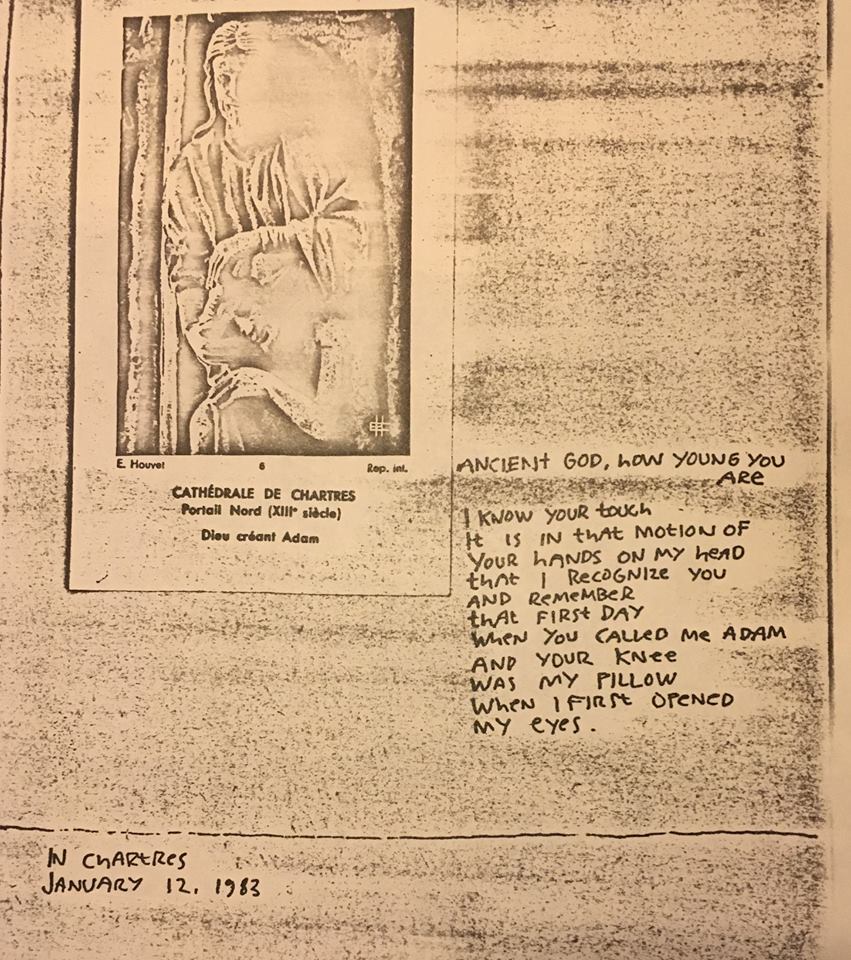The Conscience of Franz Jägerstätter:
A Homily by Deacon Tim Vineyard
“Jägerstätter reasoned that, since God gives us free will and a conscience,
God holds us responsible for what we do.”
This past summer when I was home in Texas, I heard my dad preach this homily. It was pretty long for a homily, but you could have heard a pin drop. As the story built and the courage of Franz Jägerstätter came to life, we all got wrapped up in this story—this witness—of the power of human freedom and conscience.
One of my college professors, a Cistercian monk who himself had escaped an evil regime in Hungary, told us that the human will has limitless power. He said, “The whole universe could blow up in your face. You can still be saying ‘no.’” Franz Jägerstätter said “no.”
Thanks Dad—for preaching and sharing this homily, and for being a man of conscience in my life.
* * * * * * * * * *
The German army invaded Austria in 1938. The Austrians didn’t offer any resistance. Many Austrians actually welcomed the German invasion! At that time, there was a lot of support for the goals and aims of the Nazi movement in Austria.
Hitler was greeted by enthusiastic crowds waving Nazi flags and giving the Nazi salute. Afterward, some 70,000 Austrian political opponents of the Nazis were arrested and Hitler ordered a universal vote in Austria on the issue of the unification of Austria with Germany. A Nazi-led propaganda campaign supported unification. The Catholic hierarchy advocated a “yes” vote. In the end, the Nazis claimed that Austrians overwhelmingly favored the dissolution of Austria and its becoming a part of Germany. Hitler then began the process of the deep humiliation of Jews and, with the cooperation of the locals, ran many Jews out of Austria.
Franz Jägerstätter was an Austrian farmer. He married a woman who took her Catholic faith seriously. His marriage to her changed him, and he, too, became devout in his Catholic faith. He voted in the German/Austrian unification plebiscite but, unlike his countrymen, he voted “no,” rejecting the Nazis. Due to the subsequent German annexation of Austria, Jägerstätter became subject to the German military draft. Would he serve as a soldier in the Nazi army?
Jägerstätter was happily married and had young children. The last thing he wanted was to put himself or his family at risk. But he carefully examined the morality of the German war. He witnessed the suppression of the church—the churches had to fly the swastika flag and pray for Hitler; priests were jailed. He saw the Germans take over other countries for no just reason. He heard reports of the beginning of the Nazi Jewish genocide program. For him, it all came down to this question: “Should I be a Nazi or a Catholic?” Jägerstätter recognized that to support the Nazi movement was to oppose Christ and his Church.
He met with his bishop to discuss what his response should be, but the bishop refused to discuss the matter with him. Several well-meaning priests tried to talk him into cooperating with the Germans. There was a great deal of discussion about the morality of a decision to refuse to serve as a combatant in the Nazi-led military. This decision was punishable by death; did it amount to suicide? Some questioned the morality of such a decision in light of his family responsibilities. But Jägerstätter wondered how good a husband and father he would be if he chose social conformity over obedience to Christ’s teaching.
Jägerstätter reasoned that, since God gives us free will and a conscience, God holds us responsible for what we do. He believed that people can’t escape personal responsibility for their actions simply by arguing that they were following the orders of their government.
When he was required to serve in the German army, Jägerstätter said a final good-bye to his wife and children and refused to serve as a combatant, offering instead to serve as a medic. He was promptly beheaded and forgotten.
In 1964, Gordon Zahn published a biography of Jägerstätter, In Solitary Witness. His story circulated among those participating in the Vatican II Council, which was in progress at the time. Jägerstätter’s life and writings made a significant impact on what the Catholic Church teaches today about war, peace, conscience and individual responsibility. His life had a significant impact on the 1965 Vatican II document entitled The Pastoral Constitution on the Church in the Modern World. Jägerstätter was declared a martyr in 2007 and beatified in the same year.
Looking back, we think everyone should have seen things the way Jägerstätter did. Why would anyone want to participate in the Nazi movement? But when you’re living in the middle of a national crisis, things get complicated fast. Really complicated. Even in our day, such complications can lead us to think and act based on fear, pride, confusion, fatigue, anxiety, and the desire to conform. Jägerstätter was able to see past all of that because his heart and conscience were fixed on Jesus Christ above all else. Naturally, such a path will not be taken by everyone; it takes conviction and courage to lay down your life for what you believe. Perhaps this is why Jesus said, “Do you think I have come to establish peace on the earth? No, I tell you, but rather division” (Luke 12:51).
Today we face issues that will affect the lives of thousands of people in profound ways. We don’t respond out of mere human pragmatism, fear, pride, or a desire to conform. We’re not confused. Instead, we listen to our conscience, which is formed by the Gospel, and we face the current issues with our hearts firmly fixed on Jesus Christ above all else. As the Body of Christ, this is what we do.
Blessed Franz Jägerstätter, pray for us.




